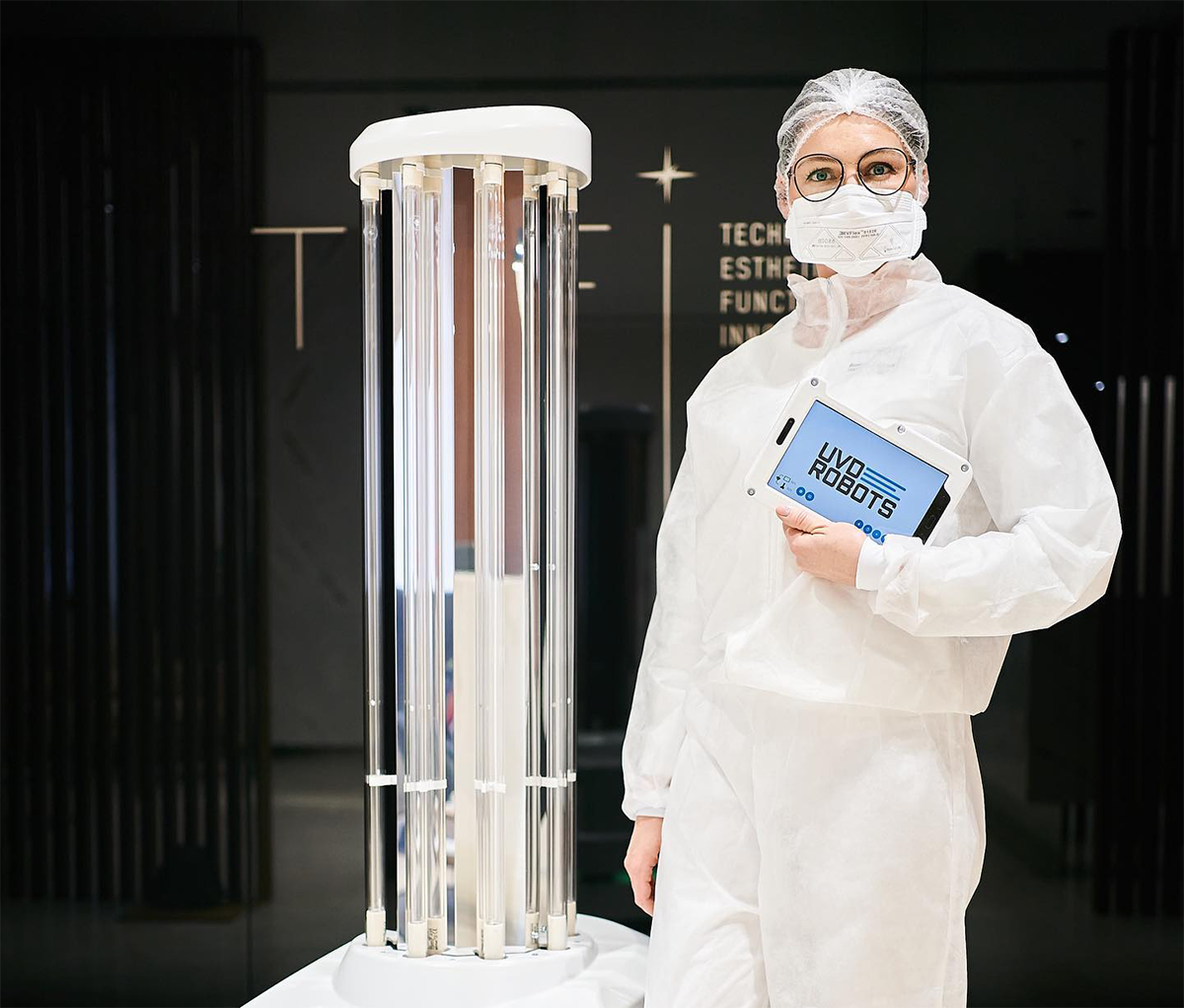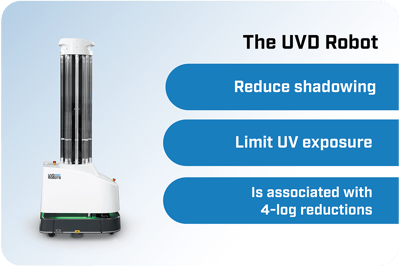Title
Content
Title
Content

Modern cleaning and disinfection practices have changed significantly over the last few decades, and there may be no greater example than the use of robots in indoor settings. Here is a closer look at advancements in disinfection technologies.
Indoor environments face the risk of being exposed to microorganisms that could be environmental contaminants.1
Such microorganisms may include:
Ultraviolet (UV) light is considered a disinfectant for such microorganisms. Specifically, Ultraviolet C (or UV-C) light at wavelengths of 254 nanometers (nm) can be emitted in a process known as Ultraviolet Germicidal Irradiation, or UVGI.5
UVD Robots are mobile, self-navigating disinfection robots that emit 254 nm UV-C light.6 They are a development of Blue Ocean Robotics, a Danish company that produces mobile robots for the service industry.7
Because UVD Robots are mobile units capable of autonomous function, they are more likely to reduce shadowing8 and limit UV exposure9 than stationary systems. Finally, UVD Robots have been associated with over 3-log to over 6-log reductions of:
representing a rate of efficacy of over 99.9% to over 99.9999%.10 11
Technological solutions for disinfecting indoor settings include those that employ UV-C light.
UVD Robots are a series of mobile, self-navigating robots that emit UV-C light at 254 nm, a form of light associated with over 3-log reductions in microorganisms, or at an efficacy rate of over 99.9%. Because of their mobility and autonomous capabilities, UVD Robots provide a more advanced technological solution to the disinfection of various environments.
Lorem ipsum dolor sit amet, consectetur adipiscing elit, sed do eiusmod tempor incididunt ut labore et dolore magna aliqua.
1. Adams, Rachel I., et al. "Microbiota of the indoor environment: a meta-analysis." Microbiome 3 (2015): 1-18.
2. Jung, Yun Hee, Joon Bae Hong, and Yun Hee Chang. "A study on the microbial air pollution of urban living and indoor environment." (2001): 1-9.
3. Chang, C‐W., and L‐J. Wang. "Methods for quantifying Staphylococcus aureus in indoor air." Indoor air 25.1 (2015): 59-67.
4. Rosas, Irma, et al. "Escherichia coli in settled-dust and air samples collected in residential environments in Mexico City." Applied and Environmental Microbiology 63.10 (1997): 4093-4095.
5. Kowalski, Wladyslaw. Ultraviolet germicidal irradiation handbook: UVGI for air and surface disinfection. Springer science & business media, 2010.
6. González, Carlos M. "Cleaning with UV light." Mechanical Engineering 143.1 (2021): 32-33.
7. Hauert, Sabine. "Building a startup ecosystem for robotics in Europe [Industrial activities]." IEEE Robotics & Automation Magazine 23.3 (2016): 14-16.
8. Cardona, Manuel, et al. "Mobile robots application against covid-19 pandemic." 2020 IEEE ANDESCON. IEEE, 2020.
9. González, Carlos M. "Cleaning with UV light." Mechanical Engineering 143.1 (2021): 32-33.
10. Edwards-Jones, Val. "Assessment of UVD Robot Against Reduction of MultiDrug Resistant Klebsiella pneumoniae, Acinetobacter baumannii and Clostridium difficile on Surfaces." Essential Microbiology Ltd. and Melbec Microbiology Ltd., Apr. 2019, www.melbecmicrobiology.co.uk, www.essentialmicrobiology.com.
11. Andersen, Helle Stendahl. Analysis Report: Test of UV Disinfection Robot acc. NF T72-281. Report Number 754372_Rev. 2. Danish Technological Institute, 2020.